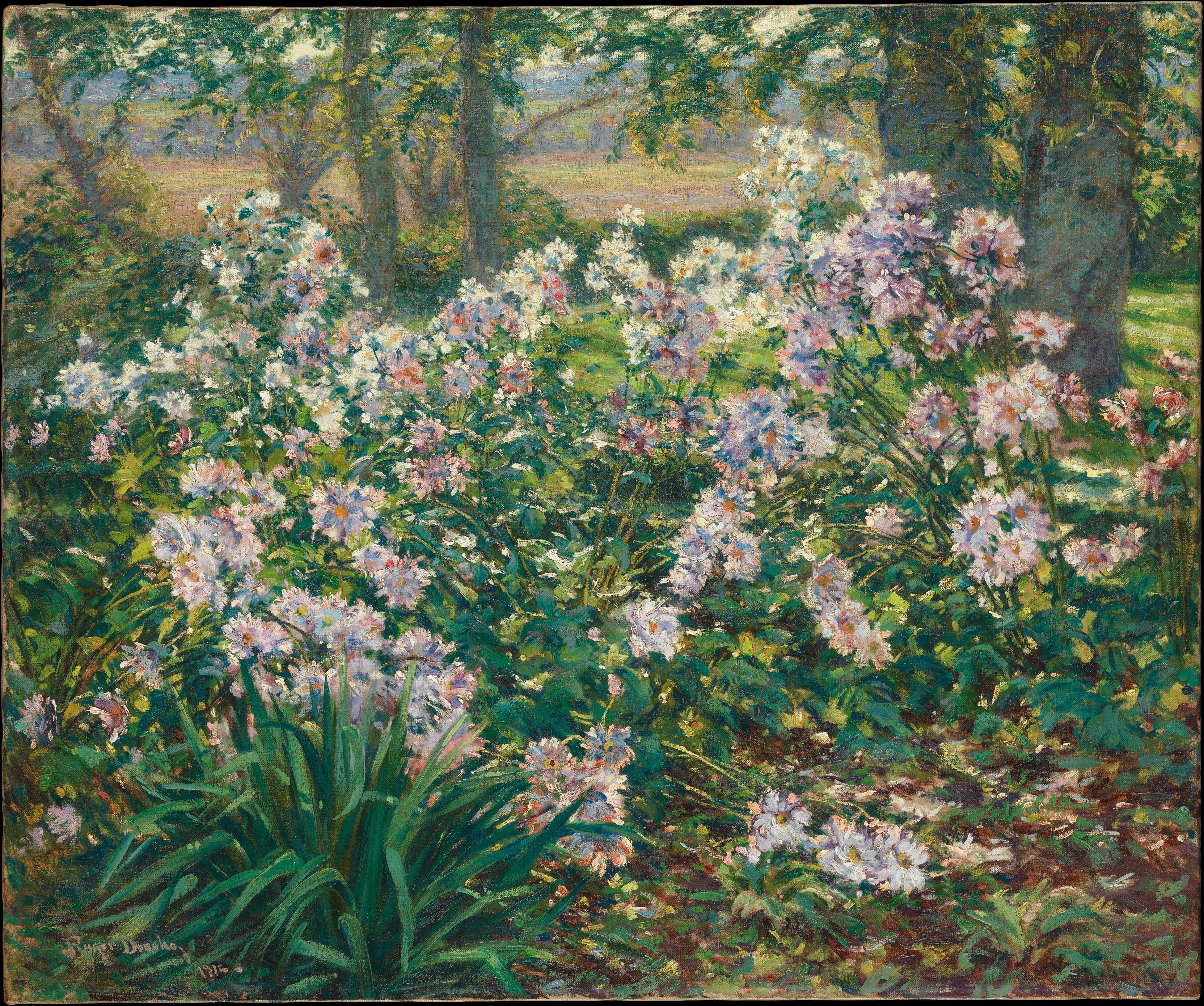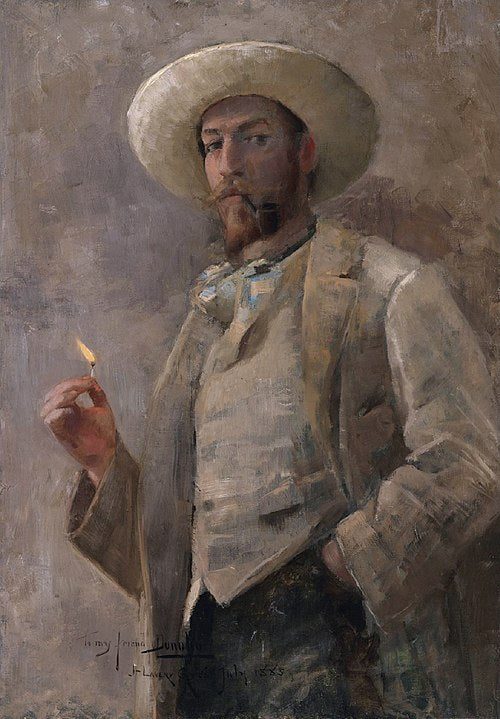
Windflowers
Windflowers (1912) by Ruger Donoho is a luminous, contemplative work that captures the poetic harmony between figure and nature, rendered in oil on canvas with a sensitivity to light and atmosphere that reflects the artist’s Impressionist leanings. The painting features a young woman, often interpreted as a muse or symbol of renewal, gathering delicate windflowers in a pastoral setting. Her pose is gentle, her expression introspective, and the surrounding landscape is bathed in soft, filtered light.
Donoho, an American painter trained in Paris and associated with the Tonalist and Impressionist traditions, was known for his ability to evoke mood through muted palettes and painterly brushwork. In Windflowers, he melds naturalistic detail with a dreamlike serenity, creating an image that feels both grounded and ethereal. The flowers, rendered with tender delicacy, seem to echo the fleeting, ephemeral quality of the moment itself.
The painting’s composition—calm, balanced, and subtly rhythmic—reflects Donoho’s European academic training, yet its emotional tone and subject matter are distinctly aligned with the American interest in pastoral beauty and quiet introspection at the turn of the 20th century. The figure, at ease within the landscape, suggests a harmonious relationship between humanity and the natural world—a theme embraced by many American artists of the period seeking solace and meaning in an increasingly industrialized society.
Choose options


Windflowers
About Artist

Ruger Donoho
